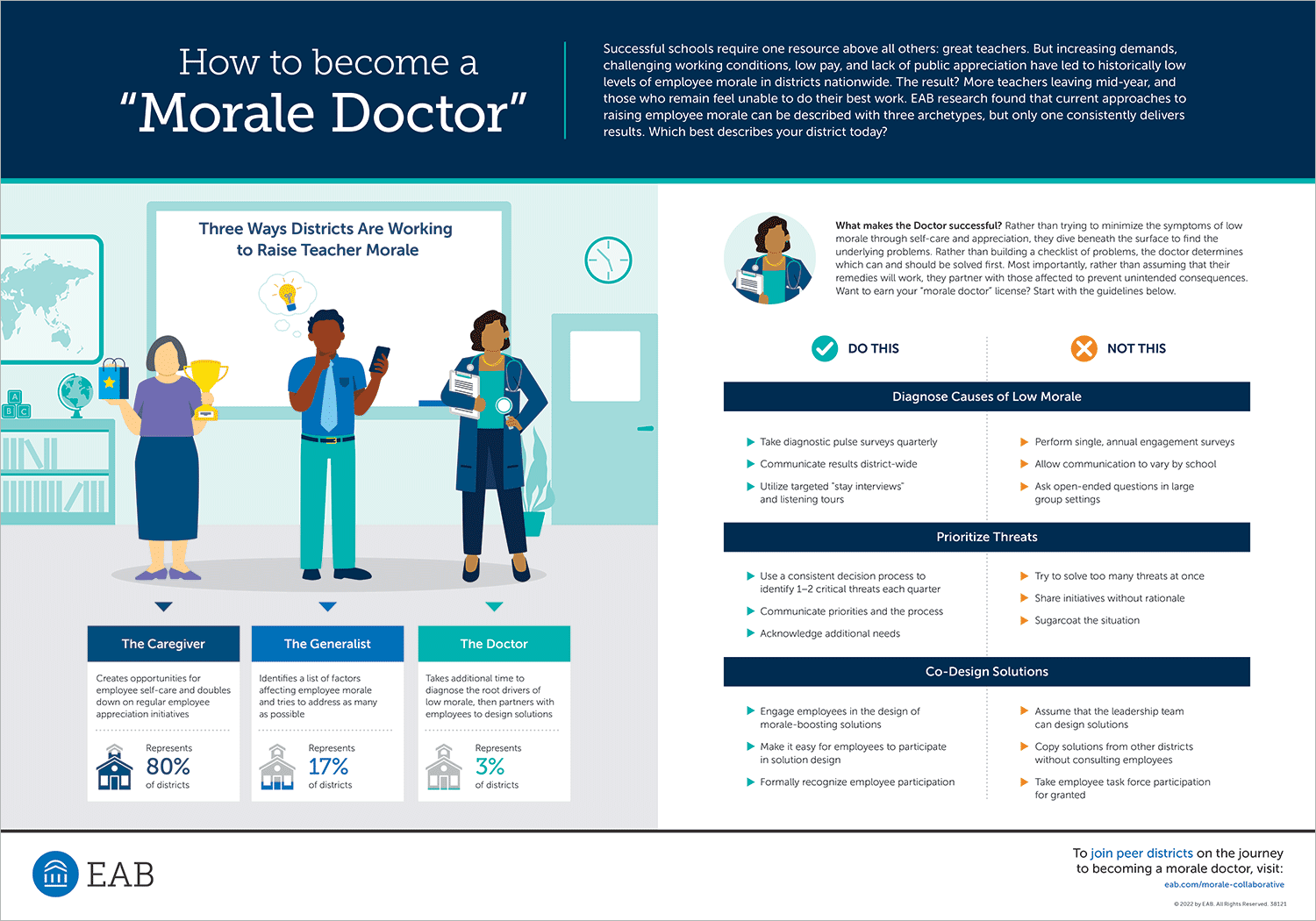Successful schools require one resource above all others: great teachers. But increasing demands, challenging working conditions, low pay, and lack of public appreciation have led to historically low levels of teacher morale in districts nationwide. The result? More teachers leaving mid-year, and those who remain feel unable to do their best work. EAB research found that current approaches to raising employee morale can be described with three archetypes, but only one consistently delivers results. Which best describes your district today?
